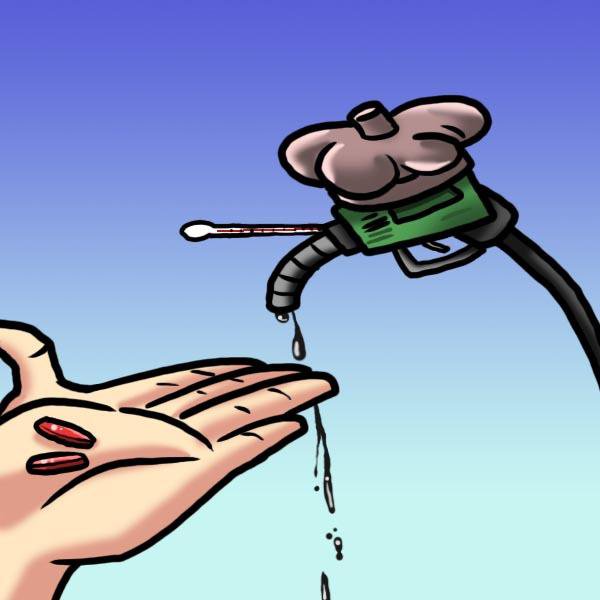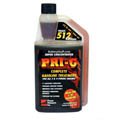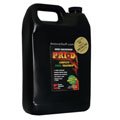Fuel Treatments. Why Bother?

More and more lately there has been a lot of talk about long term fuel storage and preservation. There are many situations where fuel storage and restoration need to be considered, like when equipment is put into storage more than a couple weeks, such as RV's, motorcycles, boats, classic cars, etc.
Often we are asked about gasoline, kerosene, and diesel fuel storage, so we decided to put the info we know "out there" on the Internet. Some information on the Internet is wrong and some is old. Some of the most current documents we have found on fuel storage dates back to the 80's and fuels have had many major changes due to environmental concerns over the past 2 decades.We hope you find this updated info useful in you search for the latest and greatest.
Most folks just want to know the basics;What works, what doesn't, what to do, what not to do, etc. With that in mind, we will try to keep this tutorial light and readable. Let's get to it.
 The fuels we buy are made for seasons and regions, therefore gas and diesel fuels are blended for the ambient temperatures of the area where they are purchased. For example, the winter time fuel needs are quite different in Tampa, Florida than Minot, North Dakota. If you store fuel purchased in the summer you may experience wintertime operation problems. In the case of diesel the fuel may cloud or gel. In the case of gasoline, the gas may not vaporize well and cause starting problems. If you are storing fuel in a boat, RV, generator, tractor, auto, etc., it is best to leave the fuel tank full and use a commercial grade fuel stabilizer prior to equipment storage. We sell PRI (Power Research Inc.) Fuel Treatments.
The fuels we buy are made for seasons and regions, therefore gas and diesel fuels are blended for the ambient temperatures of the area where they are purchased. For example, the winter time fuel needs are quite different in Tampa, Florida than Minot, North Dakota. If you store fuel purchased in the summer you may experience wintertime operation problems. In the case of diesel the fuel may cloud or gel. In the case of gasoline, the gas may not vaporize well and cause starting problems. If you are storing fuel in a boat, RV, generator, tractor, auto, etc., it is best to leave the fuel tank full and use a commercial grade fuel stabilizer prior to equipment storage. We sell PRI (Power Research Inc.) Fuel Treatments.
Today over 30% of gasoline sold is oxygenated and gasoline does not store as well as non-oxygenated gasoline. If you have a choice, pick gas without MTBE or ETBE additives.
There is no advantage to using gasoline with octane higher than what the manufacturer calls for; in fact, high octane gas can be a disadvantage in many newer design engines and engines operating with a governed speed such as a generator. You should use what your operator's manual instructs you to use. Obviously this does not apply the same way in older cars, where today's formulated fuels are often lacking. For those, we recommend Octane Supreme.
Kerosene is what is added to diesel fuel for sub zero wintertime use; at the truck stop they call it #1 diesel fuel. I suggest that Kerosene be treated as diesel fuel using PRI-D Fuel Treatment when storing and preventing algae growth. Here are some tips for storing diesel fuels and gasoline in barrels, tanks, and other types of containers. Keep fuel in a cool area and avoid wide temperature swings. Keep storage containers free of water and harmful metals. If you are storing in plastic type containers be sure these containers can handle fuel. Be sure the tanks are clean.
To keep fuel free of water, above ground tanks should have no contact with the ground. Underground tanks should be set in soil and rock for improved water drainage.
Wide temperature swings can be avoided by placing tanks in the shade or painting them with reflective paint. Metals such as copper and galvanized/zinc should not be used in fuel storage. If you use plastic, fiberglass, or other epoxy composition tanks, be sure they will stand up under the long-term hydrocarbon contact. When a large fuel tank is exposed to wide temperature swings, it should have a 2-way check valve to relieve pressure and vacuum. Most fuels produce microorganisms when water begins to collect in tanks. Commonly called algae, this stuff can be a real problem. The fuel contamination plugs filters and causes fuel system corrosion. Biocides have been developed to kill and prevent algae, bacteria, and fungus in fuels. When using fuels that have been in long term storage, don't pump from the very bottom of the tank, and filter the fuel.
There are a lot of variables that effect fuel storage. In general the use of a commercial grade fuel stabilizer on an annual basis will extend the useful life of fuel for an extra year. This annual procedure can be repeated between 5 and 10 times, thus giving fuel between 5 and 10 years of storage life.
 Now comes the self-serving part. BatteryStuff.com sells commercial grade fuel treatments and additives. Power Research Incorporated (PRI) treatments preserve and restore fuel freshness. PRI-G for gasoline, and PRI-D for diesel, kerosene and home heating oil extends fuel storage life for all fuels. PRI recommends that for long-long storage, all fuels be re-treated annually at the normal dosage rate to ensure maximum freshness and performance. While laboratory tests show that PRI chemistry can preserve fuel freshness with just one treatment for 5 to 10 years, the length of fuel preservation is affected by the original condition of the fuel and the storage conditions. For maximum protection, follow the suggested re-treatment regimen.
Now comes the self-serving part. BatteryStuff.com sells commercial grade fuel treatments and additives. Power Research Incorporated (PRI) treatments preserve and restore fuel freshness. PRI-G for gasoline, and PRI-D for diesel, kerosene and home heating oil extends fuel storage life for all fuels. PRI recommends that for long-long storage, all fuels be re-treated annually at the normal dosage rate to ensure maximum freshness and performance. While laboratory tests show that PRI chemistry can preserve fuel freshness with just one treatment for 5 to 10 years, the length of fuel preservation is affected by the original condition of the fuel and the storage conditions. For maximum protection, follow the suggested re-treatment regimen.
PRI Fuel Treatments are capable of restoring and rejuvenating old fuels. PRI must be blended (shaken, stirred, or re-circulated) and left several minutes to several hours to restore fuel quality. In most cases the fuel will recover to engine manufacturers' fuel specification.
I want you to be aware that all manufacturers recommend the use of fuel stabilizers to protect fuel quality. Yes, I mean Ford, GM, Cat, Detroit, Cummins, Mercury Marine, Briggs & Stratton, etc. Folks run out and buy highly advertised Sta-Bil or other over priced fuel products that may or may not work. Come to the BatteryStuff.com Fuel additive page to learn more. We sell products that work and have a proven track record.


